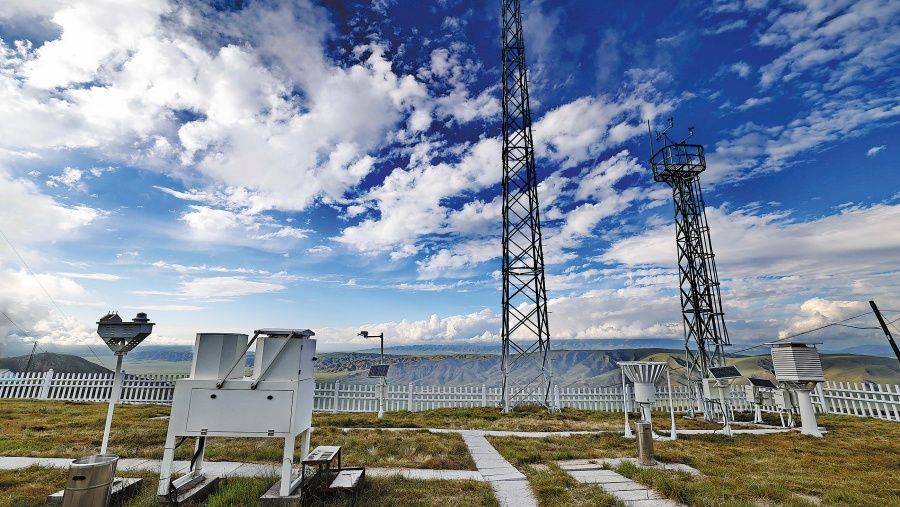Atmospheric monitor marks 30 years
Station located at top of Mount Waliguan, Qinghai province, provides world valuable data on climate change

Editor's note: China Daily is publishing a series illustrating the country's efforts to achieve its carbon peaking and carbon neutrality goals.

For the past 30 years, researchers based at the peak of Mount Waliguan in Northwest China's Qinghai province have worked around the clock to monitor the atmosphere, tracking the changes and makeup of the air to further study the effects climate change is having on the planet.
At 3,800 meters above sea level, the China Global Atmosphere Watch Baseline Observatory, the highest baseline observatory in the hinterland of Eurasia, plays an important role in "taking the temperature of the Earth".
Established in 1994 in Gonghe county of the Hainan Tibetan autonomous prefecture, the observatory has tracked what has become known as the "Waliguan Curve", a curve that shows the increase of carbon dioxide levels in the atmosphere over the past three decades.
As the observatory is so isolated, with little to be found in a 50-kilometer radius around it, monitoring can be carried out on atmosphere that has not been affected by human activities, and so the data that it produces is particularly vital for global climate change research.
As one of 32 similarly isolated and hard-to-reach observatories of the World Meteorological Organization's Global Atmosphere Watch, the team that works there live in relatively harsh conditions.
The average annual temperature at the Waliguan station is below 0 C, dropping to minus 20 C at its lowest, with the average oxygen content in the air equivalent to 67 percent of that at sea level.
























